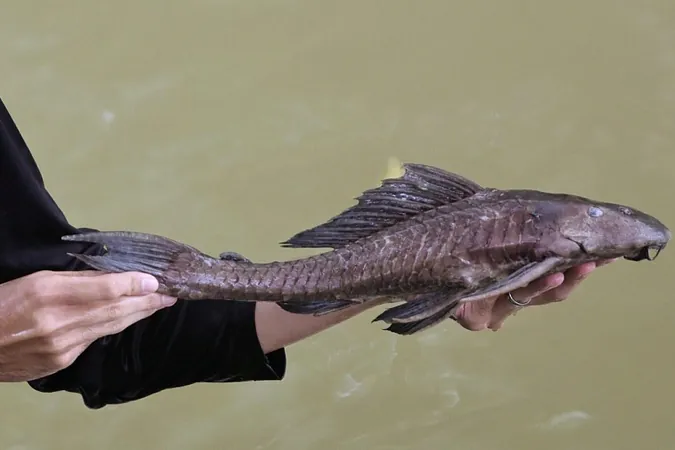
Caution! Marine Experts Urge Consumers to Avoid Eating Suckermouth Catfish Amid Pollution Concerns
2024-11-11
Author: Mei
Overview
As the suckermouth catfish, or ikan bandaraya, gains popularity on social media as a trendy culinary choice, marine experts are urgently advising Malaysians to rethink their consumption of this fish. Found predominantly in some of the country's most polluted rivers, the suckermouth catfish thrives in environments that pose serious health risks to consumers.
Environmental Concerns
Known for its resilience in murky waters, this fish has become a controversial hot topic, especially as authorities ramp up efforts to control its invasive population. The fish has no natural predators in Malaysian waters, leading to rapid reproduction that threatens local biodiversity and contributes to soil erosion near riverbanks.
Health Risks
According to Professor Mohammad Noor Amal Azmai from Universiti Putra Malaysia’s Institute of Bioscience, its thick, tough skin discourages other fish from preying on it, allowing the population to burgeon unchecked. Reports highlight that the promotion of dubious dishes like suckermouth fish satay is rising on social media, despite clear warnings.
Warnings from Experts
Experts caution that the fish absorbs heavy metals and other pollutants prevalent in the polluted waters where it resides. 'While all fish are generally edible, the source matters critically,' Professor Azmai warned. 'If caught in contaminated waters, particularly in areas like the Klang Valley, consuming this fish is ill-advised due to potential health risks.'
Diet and Pollution Accumulation
Professor Amirrudin Ahmad, a biodiversity expert from Universiti Malaysia Terengganu, echoed these warnings, explaining that the fish’s diet of algae and moss allows it to ingest pollutants that may accumulate in its body. 'Even if modern tests show metal levels are within 'safe' limits, there are inherent risks in consuming fish from such unhealthy habitats,' he stated.
Alternative Uses
Interestingly, the initiative to catch this invasive species could be harnessed for more productive uses. 'Instead of encouraging consumption, we should focus on alternative applications such as fish feed or organic fertilizers,' Professor Azmai suggested, pointing out that these alternatives would reduce the pressure on local water systems while efficiently addressing the fish's overpopulation.
Conclusion
As the conversation grows around the environmental impact of invasive species, the health implications for consumers remain a top concern. If you’ve seen the viral posts featuring suckermouth fish recipes, remember: your health could be at stake. Instead, consider supporting ecological efforts or innovative recycling methods for this species that threaten Malaysia's waterways. Stay informed and make health-conscious choices!


 Brasil (PT)
Brasil (PT)
 Canada (EN)
Canada (EN)
 Chile (ES)
Chile (ES)
 España (ES)
España (ES)
 France (FR)
France (FR)
 Hong Kong (EN)
Hong Kong (EN)
 Italia (IT)
Italia (IT)
 日本 (JA)
日本 (JA)
 Magyarország (HU)
Magyarország (HU)
 Norge (NO)
Norge (NO)
 Polska (PL)
Polska (PL)
 Schweiz (DE)
Schweiz (DE)
 Singapore (EN)
Singapore (EN)
 Sverige (SV)
Sverige (SV)
 Suomi (FI)
Suomi (FI)
 Türkiye (TR)
Türkiye (TR)